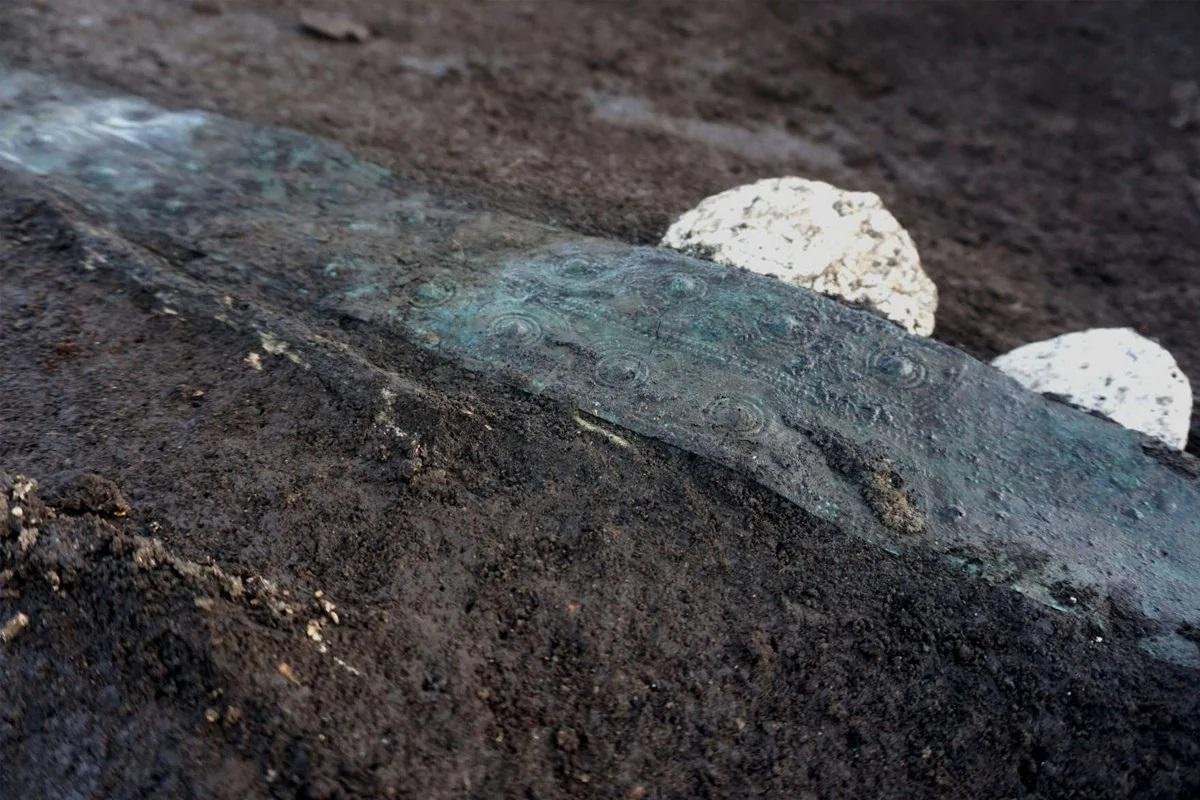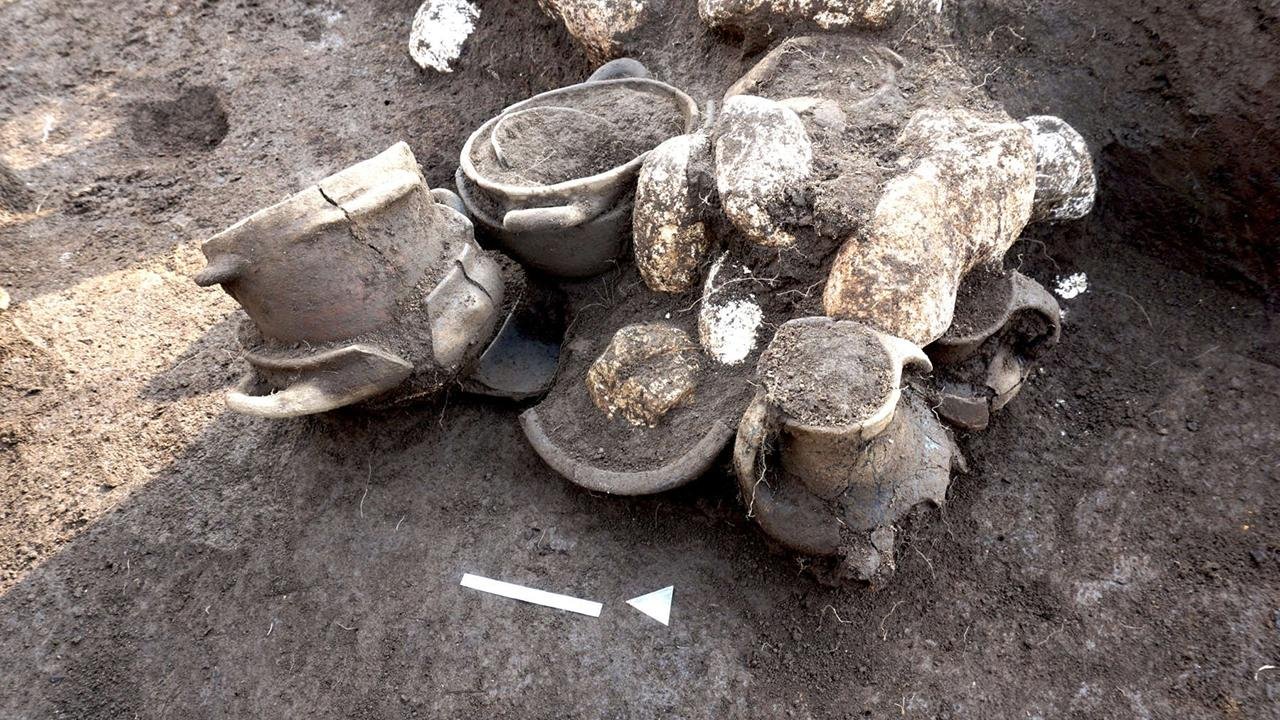Archaeologists have unearthed an extensive Iron Age necropolis in the Valle Telesina region near the Volturno River in Amorosi, Italy
 Credit: Superintendency of Archaeology, Fine Arts and Landscape
Credit: Superintendency of Archaeology, Fine Arts and Landscape
The discovery was made during excavations conducted as part of preparations for the construction of a new power plant by the Terna Group, as reported by the Superintendency of Archaeology, Fine Arts and Landscape for the provinces of Caserta and Benevento.
Spanning an area of approximately 13,000 square meters, the necropolis boasts 88 burials dating back to the 8th to the mid-7th century BCE, representing the “Pit Tomb Culture” prevalent in the region before the emergence of the Italic Samnites.
These burials represent a mix of male and female interments, each accompanied by ᴀssociated grave goods and funerary offerings. Male burials predominantly feature weaponry, while female interments contain ornamental objects such as fibulae, bracelets, pendants, worked bone, and amber.
 Credit: Superintendency of Archaeology, Fine Arts and Landscape
Credit: Superintendency of Archaeology, Fine Arts and Landscape
Of particular significance are two monumental mound burials, characterized by substantial stone circles measuring approximately 15 meters in diameter. Archaeologists believe these mounds were reserved for elite members of the society, possibly chieftains or nobility.
The excavation also yielded a plethora of grave goods and funerary offerings, including ceramics and various artifacts placed at the feet of the deceased.
According to Superintendent Gennaro Leva of the ABAP Superintendence for the provinces of Caserta and Benevento, “Our country has a very high archaeological potential; wherever we dig, it is possible to come across the material traces of the peoples who lived in the territory before us.” He emphasized the importance of preventive archaeology in safeguarding undiscovered heritage sites while allowing for infrastructural development.
 Credit: Superintendency of Archaeology, Fine Arts and Landscape
Credit: Superintendency of Archaeology, Fine Arts and Landscape
Mayor Carmine Cacchillo of Amorosi expressed pride in the discovery, stating, “The discovery of the necropolis…strengthens the intercultural path we have long been pursuing, in synergy with the competent Insтιтutions, to promote democratic governance, to strengthen social cohesion and participatory citizenship, developing greater sensitivity and enjoyability of cultural ᴀssets.”
Efforts are now underway to meticulously analyze the unearthed artifacts and remains. Samples of soil have been sent for archaeobotanical analysis. Additionally, extensive anthropological analyses of the bone remains are being conducted.





